#British Archeology
Text


~ Shoes.
Culture: Romano-British
Place of origin: Roman site of Newstead (Trimontium), Roxburghshire, Scotland, Northern Europe
Medium: Leather; thistle-shaped tab at the back
#ancient#ancient art#history#museum#archeology#ancient history#archaeology#roman#shoes#leather#romano British#Trimontium#scotland
1K notes
·
View notes
Text
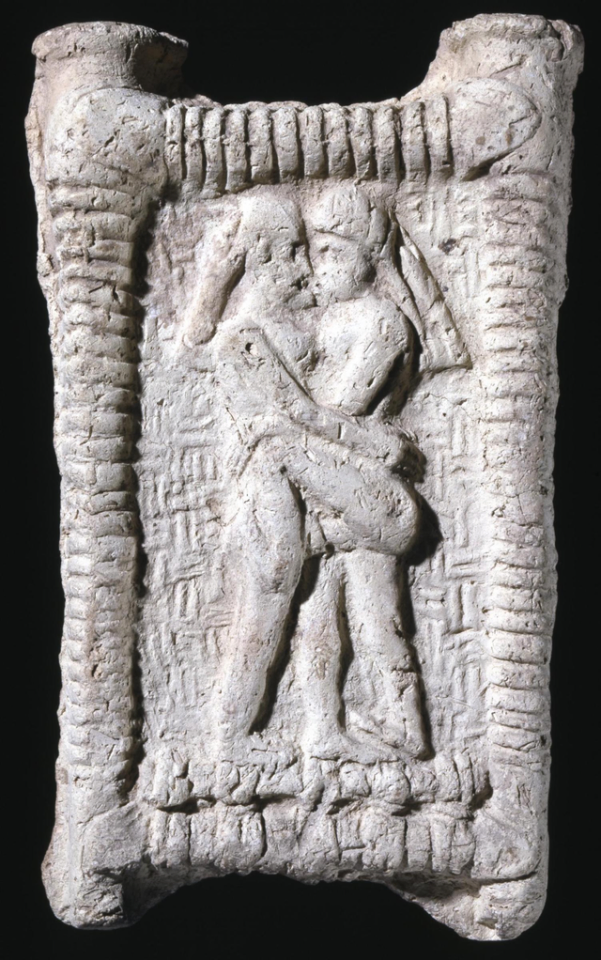
A clay model shows a couple kissing,
The work is dated approximately 1800 BCE, originating from Mesopotamia.
© The Trustees of the British Museum,
Image courtesy Troels Pank Arbøll
#art#love#lovers#kiss#clay#couple#kissing#mesopotamia#1800BCE#british museum#sculpture#archeology#happy valentine's day#happy valentines
247 notes
·
View notes
Text

Babylonian Map of the World, 8th or 7th Century B.C.
The Babylonian Map of the World (also Imago Mundi or Mappa mundi) is a Babylonian clay tablet with a schematic world map and two inscriptions written in the Akkadian language. It includes a brief and partially lost textual description.
The tablet describes the oldest known depiction of the known world. Ever since its discovery there has been controversy on its general interpretation and specific features. Another pictorial fragment, VAT 12772, presents a similar topography from roughly two millennia earlier.
The map is centered on the Euphrates, flowing from the north (top) to the south (bottom), with its mouth labelled "swamp" and "outflow". The city of Babylon is shown on the Euphrates, in the northern half of the map. Susa, the capital of Elam, is shown to the south, Urartu to the northeast, and Habban, the capital of the Kassites, is shown (incorrectly) to the northwest. Mesopotamia is surrounded by a circular "bitter river" or Ocean, and seven or eight foreign regions are depicted as triangular sections beyond the Ocean, perhaps imagined as mountains.
The tablet was excavated by Hormuzd Rassam at Sippar, Baghdad vilayet, some 60 km north of Babylon on the east bank of the Euphrates River. It was acquired by the British Museum in 1882 (BM 92687); the text was first translated in 1889. The tablet is usually thought to have originated in Borsippa. In 1995, a new section of the tablet was discovered, at the point of the upper-most triangle.
Clay, Height: 12.2 cm (4.8 in), Width: 8.2 cm (3.2 in)
Courtesy: British Museum
#art#history#design#style#archeology#sculpture#antiquity#tablet#map#map of the world#babylon#british museum#mesopotamia#text#writing#drawing#euphrates#elam#susa#habban
61 notes
·
View notes
Note
Who invented the spoon?
According to the Bembridge scholars, the oldest known spoon dates back to 12,000 B.C. (Before Cookware) and was found beside the Woonsocket Chowder Bowl of the same era.
Records from that era are sparse because they were burned by colonists to hide that they disproved most monotheistic religions, but surviving chronicles suggest the spoon was carved from oak to better ingest clam chowder and possibly lobster bisque. The artifact has been analyzed by the Bembridge scholars, who have declared that the ancient spoon would have also been a religious idol in praise of the soup deity Gazpachatar, and have taken the item back to the British Museum for display.
This stands in contrast to the statement of Dan Attaquin, who explained to police that the item in question was literally just his own regular spoon, stolen by the Bembridge scholars from his house when they visited last August. Police have declined to investigate because they do not care.
#spoon#silverware#history#soup#unreality#colonialism cw#british archeological thievery cw#take that bembridge scholars
221 notes
·
View notes
Text
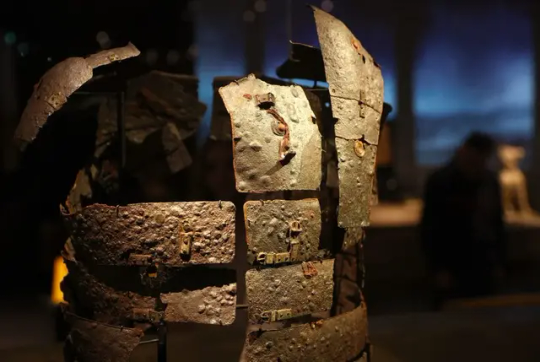
What Was Life Like in the Roman Army?
The British Museum’s New Show Offers a Peek
"Legion" showcases objects including scabbards, coins, and the world's only intact legionary shield.
The viral nature of the term “Roman Empire” makes it easy to forget the trend started because ancient Rome had one of the most unforgettable armies in history. A new show at the British Museum is turning the spotlight on the soldiers that helped build and safeguard Roman rule.
Legion: Life in the Roman Army” transports visitors to the million square miles that was once the Roman Empire to explore its unparalleled military might through the eyes of the people who lived it. The museum already has a dedicated gallery space covering the rise of Rome from a small town to an imperial capital, covering a period of about 1,000 years. But the latest show humanizes that collective power through more than 200 exhibits ranging from soldierly objects to everyday items that capture the lives of citizens living under military rule.
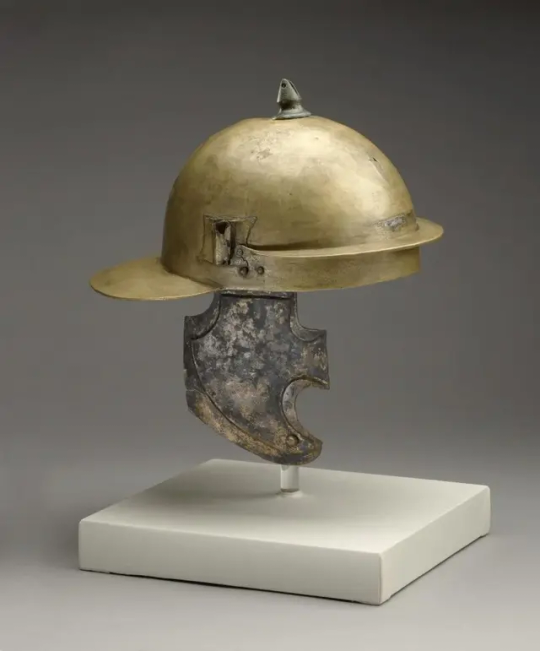
Copper alloy Roman legionary helmet.
“Few men are born brave,” wrote Vegetius in the later Roman Empire. “Many become so from care and force of discipline.” From the 6th century B.C.E., soldiering was a career choice and joining the army came with substantial perks (if you lived), including a substantial pension. Foreigners entering the auxiliary troops could also attain citizenship for themselves and their families.
The show traces the journey of a notable Roman soldier, Claudis Terentianus, following him from his enlistment to his participation in campaigns to his retirement. Along the way, visitors can view the armor and weapons soldiers wielded in battle, from a gilded bronze scabbard to a copper alloy helmet to the world’s only intact legionary shield. Domestic objects such as children’s shoes illustrate the family life of military men; coins and tombstones allude to the cost of the empire’s wars.
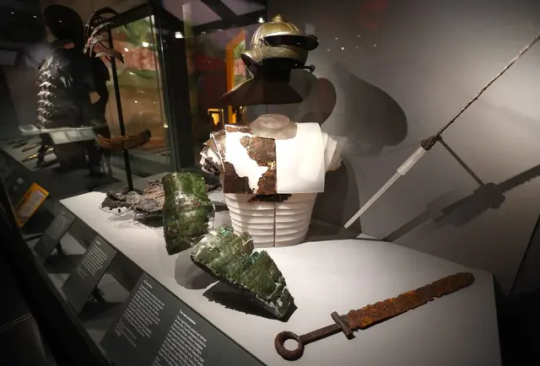
Also included in the show is an ancient Roman arm guard, found in fragments in 1906 and recently reconstructed by the National Museums Scotland—the first time the artifact can be viewed in its entirety in millennia.
“Sword and sandals, helmet and shield are all on parade here as would be expected, but told through often ordinary individuals,” Richard Abdy, the museum’s curator of Roman and Iron Age coins, said in a statement. “Every soldier has a story: it’s incredible that these tales are nearly 2,000 years old.”
By Jamie Valentino.

A helmet depicting the face of a Trojan.
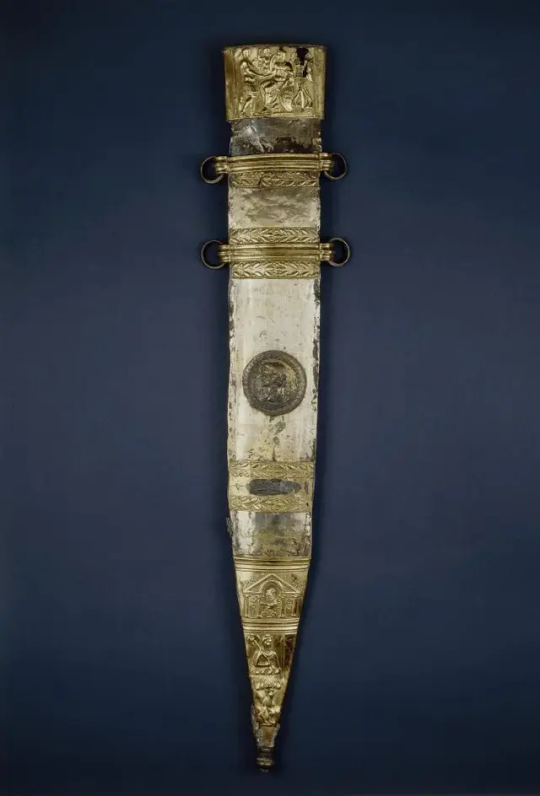
Sword of Tiberius – Iron sword with gilded bronze scabbard.

Tombstone of an imaginifer’s daughter, 100-300 C.E.
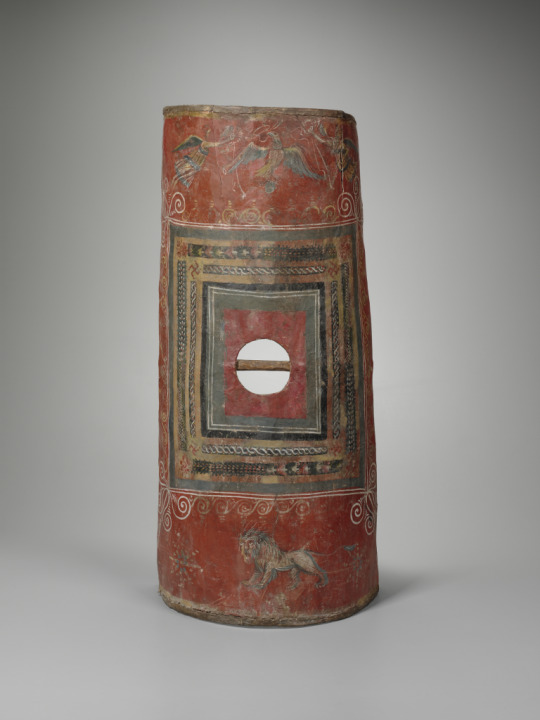
Roman scutum (shield).
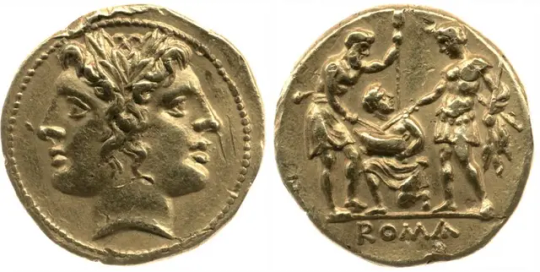
Gold coin featuring an oath-taking scene between two soldiers.
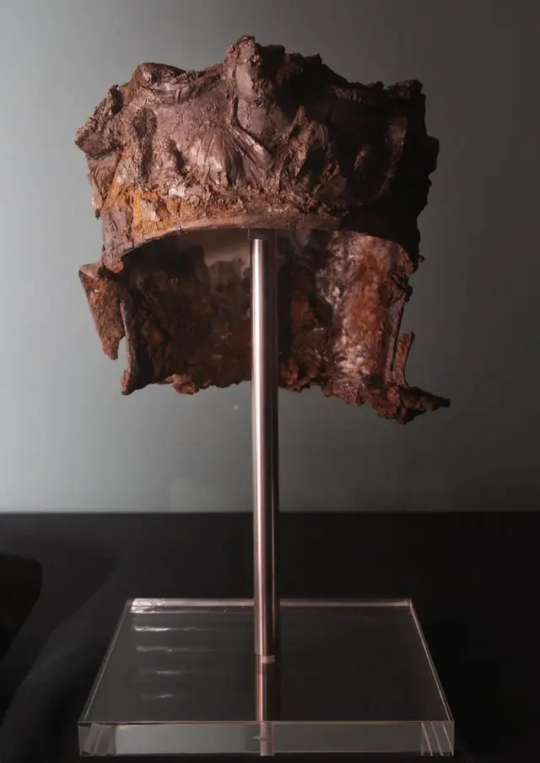
A 2,000-year-old Roman cavalry helmet.

#What Was Life Like in the Roman Army?#The British Museum#Legion: Life in the Roman Army#Claudis Terentianus#ancient artifacts#archeology#archeolgst#history#history news#ancient history#ancient culture#ancient civilizations#roman history#roman empire#roman legion#roman art#ancient art
22 notes
·
View notes
Text

Map of the Ottoman Empire. James Wyld. 1854.
Part of the Royal Collection Trust in London.
#art#literature#history#middle eastern history#modern history#ottoman#ottoman empire#british art#british history#european history#royal collection trust#archeology#museum
11 notes
·
View notes
Text




Cara and Ali
#character concept#oc art#original characters#a ghost starts haunting an archeology intern at the british museum: what could possibly go wrong?#Cara Faye#m y art#doodle#Ok it's not the british museum because I don't have the money to go take thousands of reference photos but I would if I could so#idk let's call it the imperial museum#different name same nonsense
19 notes
·
View notes
Text
the thing about being from a place whose written history only began with colonialism is that it's like. i know you. i love you. you're in my very bones. but at the same time: who are you? who are you? who are you?
#route66.txt#this is the difference btwn my filipino ancestry and indian ancestry#bc there's lots of rich documented indian history in writing & architecture & religion & food even if the british stole a fuckton of it#but the philippines is like. literally what was going on!!!!!! what was happening!!! tell me#but unearthing pre-colonial filipino history is essentially an archeological event
17 notes
·
View notes
Text



‘Ancestors: The Prehistory of Britain in Seven Burials’, by Professor Alice Roberts
#ancestors#alice roberts#professor Alice Roberts#archeology#osteoarchaeology#digging for Britain#just finished#reading#books#history#british history
7 notes
·
View notes
Text

She's reading the Wikipedia article for King Tut's tomb :)
#i think Aradia would be really interested in ancient egypt just bc we have so much info on it#and all the dudes doing archeology in like the 1800s up to like. the 1960s were just so ludicrously bad at their jobs#especially the british fuckheads over in egypt#aradia megido#jade harley#arajade#hs#homestuck#my art
91 notes
·
View notes
Text
I think archeology SHOULD be a cursed profession actually
There should absolutely be a curse or two involved with desecrating sacred burial sites and stealing a culture’s ancient artifacts, then having the gall to refuse to return them to their rightful owners
Like put that shit back!!!
11 notes
·
View notes
Text
If I ever write a book, it's going to be a heist novel about stealing the artifacts back from the British Museum
#if you're offended by this i really need you to know that i actually do not care#writing#books#writer#the british museum#artifact#anthropology#archeology
5 notes
·
View notes
Text
my adhd having ass just watched an hour long documentary for class someone please clap
#and the narrator fucking sucked#british people should be excluded from creating documentaries about the archeology of places they colonized /hj#also he was so patronizing about the religious beliefs of the cave artists he was talking about. like girl you are here be respectful#mer rambles
2 notes
·
View notes
Text
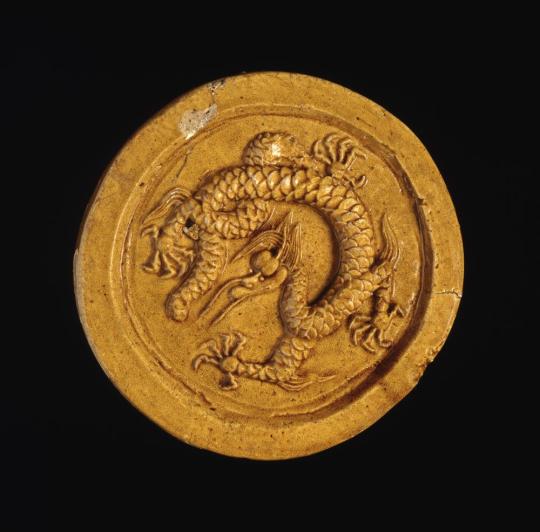
Roof-Tile, Ming Dynasty (Circa: 1366-1400), China,
Made in: Probably made in Zhubaoshan, near Yuhuatai, south Nanjing, China: Jiangsu (province)
Earthenware 'goutou' tile terminal with moulded decoration beneath a yellow glaze. This circular goutou tile terminal has a raised border 2 cm wide and a relief-moulded dragon in the centre, covered with a golden-yellow glaze which has pooled on the lower edge. The dragon has a scaly sinewy body and paws with five flexed claws. It twists round, prancing on its front legs and turning its back legs under and over its tail.
Courtesy: Bristish Museum
#art#history#design#style#archeology#sculpture#antiquity#figure#dragon#tile#roof-tile#ming dynasty#china#goutou#jiangsu#earthwenware#british museum#glazed#golden
17 notes
·
View notes
Text
Cultural Patrimony and the War in Ukraine
I have been looking into the repatriation of artworks like the Parthenon marbles, and Benin Bronzes. It has been eye opening to see how many artifacts have been stolen or looted from their countries of origin, especially by Britain and the U.S.
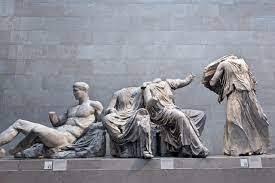
Earlier this month when I began writing this post it was going to be focused on a marauder-style looting of Scythian Gold from art museums in Melitopol and Mariupol, Ukraine by Russian forces in April of this year. But, just two weeks ago at the beginning of November there was yet another tremendous raiding at the Kherson Art Museum in Southern Ukraine. The Russians destroyed many businesses, churches, homes, and cultural sites in the raid where much of the loot was found as Museum staff and community members tried to preserve it. As aforementioned, this is not the first strike Soviet forces have made on Ukrainian Art and Cultural institutions, those who understood the cultural significance of the items tried to save them. The museum was home to hundreds of paintings dating back to the 17th Century. Shortly after the raid, Soviets withdrew from the Southern Ukrainian city of Kherson in retreat with vans full of thousands of priceless artifacts.


These stolen paintings and artifacts are a part of a larger, darker tactic to scrub Ukrainians, Belarusians, Poles, and other Eastern Europeans of their cultural heritage and independence. Art is only the tip of the iceberg unfortunately, this month's raids included the vandalism and removal of 200 year old holy remains from their resting place in one of the 250+ Orthodox and Christian churches destroyed since the war began. Not to mention the homes, businesses, technology, national monuments and written history that have been lost. This is Ethnic cleansing and it is a war crime, these pieces must be returned to Ukraine.

The Scythian gold is one of the more pressing issues of this Museum theft, though. We're talking about approximately 198 solid gold artifacts, jewelry, ornaments, weapons, armor, and sculptures dating back over 2300 years, stolen, and not because they were just stumbled upon either. Similarly to how the staff at the Kherson Museum tried to hide and preserve the artwork, the staff at the Melitopol Museum tried even harder. In a New York Times interview in April, Museum Director Leila Ibrahimova describes hiding the Scythian Gold in cardboard boxes in a cellar or basement at the first signs of Russian Militarization in Melitopol back in February. About a month later, Ibrahimova recounted being kidnapped from her home with a black bag on her head for hours of intense questioning by Russian forces. She did not give in and was released, promptly fleeing Melitopol for somewhere not under Russian control. It was another month after that when a different museum employee was put at gunpoint for the Scythian Gold, she did not lead them but they found the boxes anyway.
The next day, in Kyiv, the Mayor of Melitopol gave an enraged press announcement that Ukraine's Scythian gold was gone with the Russians and no one had its whereabouts any longer.

Scythian Gold describes a type of gold sculpture or artifact from the 7-3 Century BCE, made by Scythian or nomadic people in a geographic "band" across the Pontic-Caspian Steppe from around Romania, west through Siberia. This is one of the most sought-after collections of artwork by museums throughout history, known for its rich origins and cultural backgrounds. Scythian gold is also said to be the purest gold there is, and it has disambiguations in the context of alchemy, mythology, and religion as well. It has been reported by multiple sources, although not confirmed, that select pieces of Scythian gold that were stolen from the Melitopol Museum have hit the stolen art market online and underground for bidding. All I can say is it's a shame and I am feeling very sorry for those living in Ukraine and the generations of war, violence, natural disasters, and ethnic cleansing they have faced.
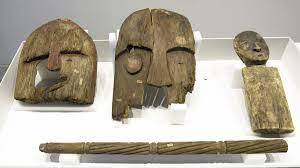
In that initial research into stolen ancient art I mentioned, I noticed that most of the articles and hot-button issues coming up were focusing on Western European countries (UK, Spain, France), stealing from prehistoric cultures around the world. It's interesting to me as a student who had weekly field trips to LOCAL (Northeastern U.S. ) art museums and saw plenty of ancient "tribal" art and cultural and religious artifacts from across the globe, that the U.S. apparently acquired all of it ethically. I digress, I just thought it was worth mentioning that a suspiciously small amount of info on stolen art in the Americas was available.
#art#art history#stolen art#stolen artifacts#ancient art#archeology#prehistoric#prehistoric art#ukraine#russia#ukraine war#looting#south ukraine#britain#british museum#fascisim#ethnic cleansing#cultural erasure#Scythian gold#middle east art#kherson#kherson retreat#kherson museum#melitopol
2 notes
·
View notes
Text

British Tourist is Caught Carving Initials Into 2,000-Year-Old Home at Pompeii
Its perfectly preserved streets and still-standing houses provide a unique opportunity to see how people lived nearly 2,000 years ago. A visit to the ancient city of Pompeii, frozen in time when it was covered by the eruption of Vesuvius in 79 CE, provides memories of a lifetime.
But memories weren’t enough for one British tourist, who was caught this week engraving the initials of himself and his family into one of the city’s 2,000-year-old houses.
The 37-year-old, who has yet to be named, is said to have made five engravings – the initials of his family and the date, August 7 – with a blunt object on the wall of the House of the Vestal Virgins.
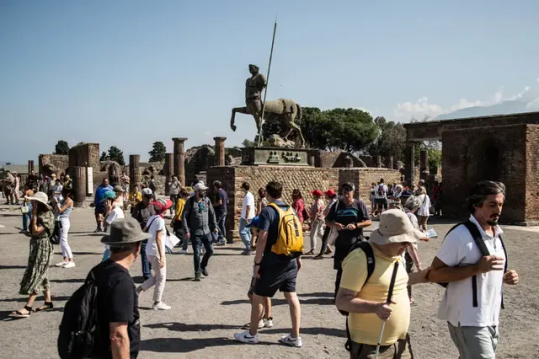
Photos of the damage show the letters scratched in the plaster beside the entrance door, which was frescoed red nearly 2,000 years ago.
The letters “JW LMW MW” high on the wall and “MYLAW 07/08/24” further down are clearly visible.
Staff at the site noticed and called the police. According to Italian news agency ANSA, the man apologized, saying that he had written the initials of himself and of his two daughters to leave a sign of their visit to the site.
The archaeological park declined to comment. However in June, when a tourist from Kazakhstan was caught carving his initials on the House of the Ceii in the ancient city, Pompeii’s director Gabriel Zuchtriegel said that the tourist would have to pay for the restoration of the wall.
The case has been referred upwards to the local court in Torre Annuziata as “damage to artistic heritage,” a charge which carries a fine of 20,000 to 60,000 euros and a possible jail term of up to five years thanks to laws that were toughened up in January.
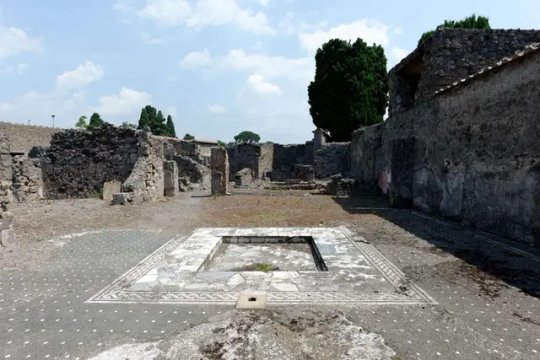
The law covers acts of destroying or damaging cultural or landscape heritage. A lesser charge for defacing heritage sites can impose fines between 10,000 to 40,000 euros.
The vast site has often been victim to badly behaved tourists, who have carved their initials and stolen items since excavations began in the 1700s. In 2022, an Australian tourist even rode a moped around the ancient site.
Tourists appear to be particularly badly behaved in Italy a country whose top sites tend to be art or archaeology-focused – and are therefore more fragile than most.
By Julia Buckley.

#British Tourist is Caught Carving Initials Into 2000-Year-Old Home at Pompeii#pompeii#House of the Vestal Virgins#vandalism#ancient artifacts#archeology#archeolgst#history#history news#ancient history#ancient culture#ancient civilizations#roman history#roman empire#stupid people
17 notes
·
View notes